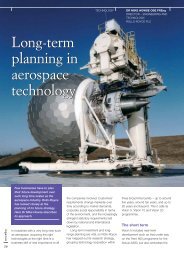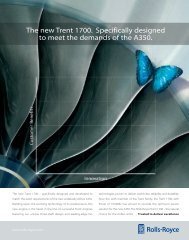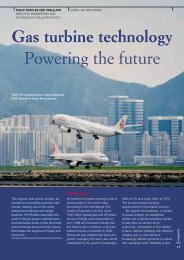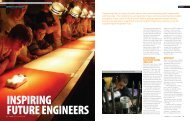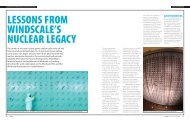[442-07] Newton - Ingenia
[442-07] Newton - Ingenia
[442-07] Newton - Ingenia
Create successful ePaper yourself
Turn your PDF publications into a flip-book with our unique Google optimized e-Paper software.
DAVID NEWTON<br />
RESEARCH ASSOCIATE<br />
FLUIDISATION, BP CHEMICALS,<br />
SUNBURY-ON-THAMES<br />
MANUFACTURING<br />
Revealing the secrets<br />
of fluidised beds<br />
Exploiting links between<br />
academia and industry<br />
Close cooperation between<br />
academics and industrialists over<br />
many years can be of great benefit<br />
to both parties. David <strong>Newton</strong><br />
describes how this has led to the<br />
development of a unique X-ray<br />
imaging technique to visualise and<br />
characterise flows in multiphase<br />
systems.<br />
Introduction<br />
Occasionally I am asked, by both<br />
academics and industrialists, whether<br />
long-term collaboration with academia<br />
can pay off. Having worked as a<br />
chemical engineer in industry for the<br />
past 20 years, I have developed close<br />
contacts with several UK university<br />
departments and can, from an<br />
industrialist’s perspective, answer a<br />
resounding ‘yes’ to that question.<br />
Although it may take several years to<br />
fully realise such a ‘pay-off’, it is well<br />
worth the time, expense and<br />
sometimes trouble for industry to<br />
develop and maintain such links with<br />
academia.<br />
The purpose of this article is to<br />
highlight one such long-term<br />
relationship and outline how it has<br />
transformed the way some basic<br />
chemical engineering practices are now<br />
carried out in BP. This is very much a<br />
personal account of the development of<br />
a unique X-ray imaging technique to<br />
visualise and characterise flows in<br />
gas–solid and gas–liquid–solid<br />
multiphase systems. This technique has<br />
contributed much to the technical<br />
understanding of reactor multiphase<br />
flows and to commercial successes in<br />
several areas, and has also generated<br />
significant financial rewards.<br />
Three frequently asked questions<br />
concerning X-ray imaging are ‘Why?’ as<br />
in ‘Why do we use the technique?’<br />
‘How?’ as in ‘How does it work and<br />
how did BP come to use and develop<br />
it?’ and ‘What?’ as in ‘What are the<br />
technical and financial benefits?’ In this<br />
article I intend to answer these<br />
questions in some detail. But I would<br />
also like to address the questions<br />
‘Where?’ and ‘Who?’, as in ‘Where did<br />
the technique come from?’ and ‘Who<br />
was responsible for initiating and<br />
applying the technique?’<br />
Historical development –<br />
who and where?<br />
It is over 40 years since Peter Rowe<br />
and colleagues, working at the Atomic<br />
Energy Research Establishment (AERE)<br />
Harwell, and then University College<br />
London (UCL), first demonstrated the<br />
immense potential of applying X-ray<br />
ingenia<br />
47
MANUFACTURING<br />
processors. We had begun to doubt<br />
some of the design bases that had<br />
been used for designing commercialscale<br />
fluidised bed process hardware.<br />
During 1985 to 1991, whilst working at<br />
UCL, we did find many discrepancies<br />
between phenomena and data<br />
determined from the X-ray technique<br />
and those conforming to an<br />
‘established view’. Many of these<br />
findings have been published. 2–4<br />
ingenia<br />
48<br />
Figure 1: Schematic of the X-ray technique<br />
imaging to visualise the internal flow<br />
patterns of bubbles in gas fluidised<br />
beds. Since those early pioneering days<br />
there have been many hundreds of<br />
publications dealing with the properties<br />
of gas fluidised beds obtained from the<br />
X-ray imaging technique, 1 a significant<br />
proportion of them coming from UCL<br />
as scientific papers or PhD theses. In<br />
1965 Peter Rowe left AERE and moved<br />
to UCL as Ramsay Head and Professor<br />
of Chemical Engineering. Since then the<br />
technique has flourished over the years<br />
at UCL, mainly through the efforts of<br />
Peter Rowe (who retired in 1985), John<br />
Yates (current Head of Chemical<br />
Engineering at UCL), David Cheesman<br />
and, more recently, Paola Lettieri.<br />
Back in 1985 BP Research began<br />
what was to be a long and very fruitful<br />
relationship with the Department of<br />
Chemical Engineering at UCL. Over the<br />
following seven years BP (and others,<br />
such as The Dupont Chemical Co.)<br />
used and helped develop the facility at<br />
UCL. At that time, we were driven by<br />
the need to understand what was going<br />
on inside some of our gas fluidised bed<br />
Figure 2: Schematic of the recirculating loop configuration employed by BP<br />
How does it work?<br />
Differences in X-ray absorbance of the<br />
components (i.e. solids, liquids or<br />
gases) present in a reactor vessel allow<br />
hydrodynamic information to be<br />
determined. X-rays do not interact with<br />
the hydrodynamic processes and<br />
therefore do not disturb the<br />
measurements, in contrast to<br />
techniques that use intrusive probes. In<br />
the X-ray technique a pulsed (typically<br />
50 Hz) high energy beam (from 40 to<br />
150 kV) is produced from a rotating<br />
anode. The X-ray pulses (typically<br />
between 1 and 5 ms in duration for<br />
rapidly fluctuating multiphase systems)<br />
are synchronised with an image<br />
capturing device and pass through the<br />
reactor vessel, where X-ray absorption<br />
is proportional to the nature and<br />
quantity of material along the path.<br />
Rapid X-ray pulses of a few<br />
milliseconds duration are essential for<br />
accurate quantitative work.<br />
The X-ray beam emerging from the<br />
reactor vessel is amplified using an<br />
image intensifier, without which it would<br />
be impossible to detect the small<br />
changes of intensity in the emerging X-<br />
ray beam. The image intensifier tube<br />
converts the X-ray absorption patterns<br />
into a light image of sufficient<br />
brightness and contrast to be recorded<br />
by some means, typically photographic<br />
film (cine camera), charge coupled<br />
device or video camera. Figure 1 shows<br />
a schematic of the X-ray system and<br />
Figure 2 shows a schematic of the BP<br />
recirculating loop configuration for<br />
imaging a 750 mm diameter fluidised<br />
bed unit.
MANUFACTURING<br />
Why use the X-ray<br />
technique?<br />
Why use X-rays? Why visualise<br />
multiphase systems? If this article were<br />
concerned with medical applications<br />
then the answer to the first question<br />
would be self-evident. It is almost<br />
inconceivable, certainly in the Western<br />
world, to confirm or diagnose many<br />
medical conditions, from broken bones<br />
to lung tumours, without some form of<br />
X-ray imaging technology.<br />
In chemical engineering, as in many<br />
industrial processes, a technique that<br />
enables characterisation, and provides<br />
detailed information, of flow patterns<br />
inside reactor vessels or transfer lines<br />
would be highly desirable and extremely<br />
beneficial. Eminent researchers have<br />
highlighted the problems encountered<br />
by chemical engineers in predicting<br />
multiphase flow behaviour. Derek<br />
Geldart 5 considered that ‘the arrival<br />
time of a space probe travelling to<br />
Saturn can be predicted more<br />
accurately than the behaviour of a<br />
fluidised bed reactor’. And G. F. Hewitt 6<br />
stated: ‘multiphase flows are often<br />
extremely complex in nature and many<br />
of the relationships used for multiphase<br />
flows are of an essentially empirical<br />
nature, are of limited applicability, and<br />
reflect the poor physical understanding<br />
of many two-phase flow phenomena’.<br />
X-ray imaging can be used both as a<br />
diagnostic tool – to help identify the<br />
cause of the ‘problem’ and also to help<br />
formulate the ‘solution’ to that problem<br />
– and as a way of understanding<br />
multiphase flow phenomena and their<br />
relevance to commercial operational<br />
parameters. In the context of chemical<br />
engineering, the images are usually<br />
taken from reactor mock-ups, pilot<br />
plants or pieces of process equipment<br />
operating at, or as close as possible to,<br />
realistic process conditions. This can<br />
mean performing experiments at<br />
elevated temperatures and pressures,<br />
with real-scale process hardware and<br />
catalyst systems.<br />
Although the theoretical aspects of<br />
many multiphase flow phenomena are<br />
described by empirical correlations, it is<br />
clear that the application of many of<br />
these correlations for industrial<br />
exploitation can be somewhat uncertain.<br />
We found such uncertainties during early<br />
work on the X-ray facility at UCL in the<br />
1980s. The object of the investigation<br />
was to test the jet penetration lengths<br />
from horizontal and vertical orientated<br />
nozzles for use in a fluid catalytic<br />
cracking (FCC) regenerator unit.<br />
The objective of the FCC process is<br />
to use both catalytic and thermal<br />
cracking to convert heavy hydrocarbons<br />
(high molecular weight) into lower<br />
molecular weight compounds – usually<br />
boiling in the gasoline and middle oil<br />
ranges. The cracking reactions are<br />
endothermic and are accompanied by<br />
carbon deposition on the solid catalyst<br />
surface. The FCC process has one<br />
location for the absorption of heat, the<br />
reaction and carbon deposition, referred<br />
to as the riser, and a second location<br />
where the deposited carbon is burnt off<br />
and heat is released, referred to as the<br />
regenerator unit. The heat is then<br />
returned to the first location to drive the<br />
reaction, and the circulation of the solid<br />
catalyst particles is the means by which<br />
heat is transported around the unit. The<br />
only way this can be done efficiently is<br />
by employing one or more fluidised<br />
beds.<br />
Many traditional modelling<br />
techniques determine the gas and<br />
solids flow properties of fluidised beds<br />
in small- or medium-scale perspex or<br />
glass equipment operating at ambient<br />
conditions, with measurements made<br />
through viewing screens or with the aid<br />
of sensors placed in the bed.<br />
Observations are not only restricted but<br />
often distorted by the presence of<br />
internal surfaces or from effects of<br />
scale-down. Consequently, most jet<br />
penetration lengths measured by such<br />
techniques fail to detect interactions<br />
between adjacent nozzles or pipes<br />
because of the stabilising effects of the<br />
viewing screens. With X-ray imaging,<br />
such limitations do not exist and unique<br />
information that cannot be obtained by<br />
other techniques is generated.<br />
Figure 3 shows how wall effects can<br />
influence the measurements of gas jet<br />
penetration lengths in fluidised beds.<br />
Initially a nozzle was placed close to the<br />
vessel wall, made from perspex, and<br />
the jet penetration lengths were<br />
Figure 3: Vertical jet penetration for hindered and unhindered nozzles<br />
ingenia<br />
49
MANUFACTURING<br />
ingenia<br />
50<br />
observed visually as a function of<br />
increasing nozzle exit velocity. The<br />
penetration lengths (shown by red<br />
square symbols) were hindered<br />
because of the stabilising effects of the<br />
vessel wall. The nozzle was then moved<br />
to the centre of the fluidised bed, about<br />
150 mm away from the nearest wall,<br />
and the penetration lengths were<br />
determined by means of X-ray imaging.<br />
These penetration lengths (shown by<br />
black circle symbols) were substantially<br />
reduced because they were out of<br />
range of the stabilising influence of the<br />
vessel wall. These internal penetration<br />
lengths could be viewed only by means<br />
of X-ray imaging because of the<br />
opaqueness of the fluidised solids.<br />
Thus by use of X-ray imaging we were<br />
able to demonstrate how inaccurate<br />
and inappropriate many literature<br />
correlations are for predicting jet<br />
penetration lengths and this can have a<br />
significant financial impact on a<br />
process’s profitability.<br />
These results are consistent with<br />
other jet penetration data determined<br />
from X-ray imaging 7 . As can be seen<br />
from Figure 3 agreement with the<br />
correlations is not that good.<br />
Figure 4 shows what happens when<br />
several regenerator nozzles are<br />
arranged around the circumference of<br />
the air ring. If nozzles are placed too<br />
close to each other, as illustrated for<br />
the five-nozzle case in Figure 4a, then<br />
gas from lateral nozzles weeps around<br />
the ring to coalesce with the vertical<br />
gas nozzle to form a large plume above<br />
the central nozzle. Only with adequate<br />
nozzle separation in terms of both<br />
distance and nozzle angle, as in<br />
Figure 4b, can this region be bypassed<br />
and nozzle interactions eliminated. It is<br />
critically important for design and<br />
operational purposes to be able to<br />
predict adjacent nozzle interactions and<br />
the jet penetrations from nozzles in<br />
fluidised beds 8 .<br />
Those early years at UCL became a<br />
watershed in terms of ‘opening our<br />
eyes’ to the many differences and<br />
pitfalls that exist in trying to exploit<br />
published data and correlations for<br />
industrial-scale processes without due<br />
validation. This is a lesson, I believe, we<br />
have learnt well. This may seem a<br />
rather trivial example, but I shall<br />
demonstrate how such a situation can<br />
have a very significant impact on<br />
operational costs and profitability for<br />
FCC operation.<br />
What do we gain?<br />
The X-ray technique has the following<br />
benefits:<br />
●<br />
●<br />
●<br />
●<br />
●<br />
●<br />
●<br />
●<br />
●<br />
it is a non-invasive technique that<br />
does not interfere with the system<br />
an internal picture of the process<br />
fluid dynamics is generated<br />
real-time information can be<br />
captured directly onto film or video<br />
unambiguous images of rapidly<br />
changing multiphase flows are<br />
obtained<br />
it is unaffected by process operating<br />
conditions<br />
realistic process conditions can be<br />
employed for the generation of data<br />
(100 bar and 1000°C have so far<br />
been employed)<br />
large-scale three-dimensional<br />
process plant can be imaged<br />
it is a diagnostic tool for assessing<br />
engineering designs and ‘troubleshooting’<br />
it aids flow characterisation and<br />
process optimisation<br />
quantitative information about the<br />
distribution of material can be<br />
obtained.<br />
Figure 4: Schematic showing gas flow from regenerator nozzles<br />
(a) Five nozzles with interactions<br />
(b) Three nozzles suitably spaced with no interactions<br />
●<br />
In an FCC regenerator unit, efficient air<br />
distribution is essential to give good<br />
fluidisation of the catalyst bed. Good<br />
fluidisation is necessary to achieve<br />
stable catalyst flow into the hoppers<br />
and standpipes, as well as a fluidised<br />
bed environment into which the cyclone<br />
dip-legs discharge. Distributor defects,<br />
whether as a result of poor design or<br />
operational damage, can lead to:<br />
●<br />
●<br />
●<br />
●<br />
●<br />
●<br />
●<br />
●<br />
uneven regenerator temperatures,<br />
that is afterburn<br />
excessive air and power<br />
consumption<br />
reductions in feed capacity/coke<br />
burning<br />
poor fluidisation<br />
uneven bed densities<br />
unstable flow in catalyst standpipes<br />
catalyst circulation problems<br />
and flooding of cyclones.<br />
The consequences of operating a<br />
regenerator unit with a damaged or<br />
improperly designed distributor can be<br />
costly. Regenerator air bypassing of the<br />
catalyst bed can lead to:<br />
1 excessive air and power<br />
consumption – for a unit operating<br />
with 2–3% oxygen in the flue gas
MANUFACTURING<br />
instead of less than 1%, the cost<br />
can be 4–5 cents per barrel<br />
2 reduction in coke burning capacity<br />
or feed capacity – depending on the<br />
FCC processing margin, this could<br />
represent a loss of $2–3 per barrel of<br />
capacity.<br />
If the penetration of air into the fluidised<br />
bed regenerator unit is only a fraction of<br />
that predicted by the ‘design’<br />
correlation, due either to using an<br />
inappropriate correlation or to the<br />
nozzles being placed too close to each<br />
other around the aeration rings,<br />
resulting in nozzle–gas interactions (as<br />
in Figure 4a), then considerable<br />
quantities of air and power are required<br />
in an attempt to maintain regenerator<br />
performance. For example, for an FCC<br />
unit with 50 000 barrels per day<br />
capacity, this could have a cost penalty<br />
in excess of $1 million per year for<br />
badly designed regenerator air rings. If<br />
the design and operation of the<br />
regenerator unit was so bad that it<br />
grossly inhibited coke burning capacity<br />
or feed capacity then a cost penalty in<br />
excess of $50 million per year could be<br />
obtained. On the global scale, FCC<br />
units account for over 10 million barrels<br />
per day capacity. If, say, only 10% of<br />
these units were operating in the nonoptimal<br />
way described above, then<br />
potentially this seemingly trivial design<br />
defect could account for over<br />
$1000 million per year in lost profits!<br />
Other areas of application<br />
In the chemicals area, the X-ray<br />
technique has also made a significant<br />
contribution to the development of new<br />
technology, principally the injection of<br />
liquid hydrocarbons into a fluidised bed<br />
gas-phase polymerisation reactor for<br />
removal of the exothermic heat of<br />
reaction. In this technology, termed<br />
‘High Productivity’, liquid is sprayed<br />
directly into the fluidised bed with<br />
nozzles 9–10 and the increased cooling<br />
capacity achieved through the latent<br />
heat of vaporisation enables significant<br />
increases in reactor productivity. The<br />
locations and orientations of the liquid<br />
sprays were determined experimentally<br />
by visualising the vaporisation of liquid<br />
hydrocarbons in a polyethylene fluidised<br />
bed operating at realistic process<br />
conditions. Figure 5 is a photograph of<br />
the experimental equipment employed<br />
in the development of High Productivity.<br />
Previous forms of gas-phase<br />
technology that returned a mixture of<br />
gas and liquid into the base of the<br />
fluidised bed reactor through the grid<br />
plate are limited by the maximum<br />
amount of liquid that can be held in<br />
the gas stream. The limit is reached<br />
when an overload of liquid occurs.<br />
Because the process operates close<br />
to the polymer’s melting point,<br />
accurate temperature control and<br />
fluidisation characteristics are<br />
essential. The polymerisation rate and<br />
heat removal must be controlled to<br />
prevent fusion, agglomeration of<br />
polymer particles, or a thermal<br />
runaway reaction.<br />
Liquid flooding or frothing in the<br />
bottom head of the reactor, even at<br />
relatively low levels of liquid in the<br />
recycle stream, has been reported, 11<br />
thereby restricting heat removal from<br />
the fluidised bed and causing<br />
instability. Figure 6 shows a schematic<br />
of BP’s Enhanced High Productivity<br />
loop. The heat exchanger unit is<br />
operated at a sufficiently low<br />
temperature to form liquid. The liquid is<br />
separated from the recycle fluidising<br />
gas by a separator unit and then is<br />
pumped into the fluidised bed reactor<br />
via nozzles located within the fluidised<br />
bed of growing polymer particles.<br />
Catalyst and/or catalyst modifiers can<br />
be added to the liquid for maximum<br />
dispersion within the fluidised bed. Key<br />
success factors in developing the<br />
spray nozzle technology for the<br />
polyethylene process were the ability to<br />
visualise and relate the spray<br />
characteristics from the various nozzle<br />
designs with the fluid dynamics of the<br />
polymerisation process.<br />
In addition to polyethylene<br />
technology, the X-ray facility has been<br />
used extensively to design BP’s new<br />
fluidised bed vinyl acetate process.<br />
Figure 5: Photograph of experimental<br />
equipment X-rayed in the<br />
development of BP<br />
Chemicals High Productivity<br />
technology<br />
Process hardware such as the internal<br />
fluidised bed reactor cooling tubes,<br />
oxygen injection system and acid spray<br />
nozzles were all developed through X-<br />
ray imaging.<br />
The future<br />
Current technology produces twodimensional<br />
images of the internal flow<br />
patterns. As with other imaging<br />
techniques, some specialised expertise<br />
is necessary to interpret the images<br />
and make diagnoses. Extending the X-<br />
ray technique to produce threedimensional<br />
images would remove<br />
ingenia<br />
51
MANUFACTURING<br />
ingenia<br />
52<br />
Figure 6: Schematic of Enhanced High Productivity loop.<br />
many of the uncertainties in the<br />
interpretations and could be achieved<br />
by simultaneously producing two<br />
images at right angles to each other (by<br />
using two X-ray sources/image<br />
capturing devices) and reconstructing<br />
the three-dimensional image along the<br />
same lines as a medical CAT scanner.<br />
Applying two- or three-dimensional X-<br />
ray visualisation to ‘real’ plants with<br />
process chemistry occurring would<br />
further enhance the diagnostic power of<br />
the technique.<br />
Figure 7: Photograph of recirculating<br />
loop utilities<br />
In the immediate future, by<br />
combining the X-ray technique with<br />
other complementary techniques, such<br />
as positron emission particle tracking<br />
(PEPT), a complete picture of the fluid<br />
dynamics of multiphase systems could<br />
be obtained. With X-ray imaging,<br />
individual particles cannot be seen and<br />
so no detailed information about the<br />
solids’ movement in multiphase<br />
reactors can be obtained.<br />
In PEPT the movements of individual<br />
particles can be tracked and recorded.<br />
This technique is exploited by<br />
Birmingham University in many<br />
chemical engineering applications and<br />
has the potential to be as valuable to<br />
industry as X-ray imaging has been to<br />
BP – and it is all based on the original<br />
1960s concept of Peter Rowe!<br />
Conclusion<br />
I hope I have demonstrated that close<br />
collaboration between academics and<br />
industrialists can pay off and not just<br />
financially. The mutual exchange of<br />
knowledge and information coupled<br />
with insights gained along the way can<br />
really foster thinking that is ‘outside the<br />
box’. For both industry and academia it<br />
can offer a way to challenge and<br />
overcome some well established but<br />
sometimes erroneous views. ■<br />
References<br />
1 Davidson, J.F. and Harrison, D. (eds)<br />
(1971) Fluidisation, Academic Press,<br />
Chapter 4.<br />
2 <strong>Newton</strong>, D. and Johns, D.M. (1995)<br />
Fluidisation VIII, pp. 467–474.<br />
3 <strong>Newton</strong>, D. and Becker, S. (Summer<br />
1996) PTQ, pp. 43–50.<br />
4 <strong>Newton</strong>, D., Fiorentino M. and<br />
Smith, G.B. (2001) Powder<br />
Technology 120, pp. 70–75.<br />
5 Geldart, D. (1986) Gas Fluidisation<br />
Technology, John Wiley & Sons Ltd.<br />
6 Hewitt, G.F. (1992) Handbook of<br />
Heat Exchange Design. Begell<br />
House Inc, New York.<br />
7 <strong>Newton</strong>, D., Smith, G.B. and<br />
Gamblin, B. (September 1997) ‘2nd<br />
European conference on<br />
fluidisation’, Bilbao, Spain.<br />
8 <strong>Newton</strong>, D., Grant, C.S. and<br />
Gamblin, B. (Winter 1994) HTI<br />
Quarterly, pp. 41–45.<br />
9 <strong>Newton</strong>, D., Chinh, J.C. and Power,<br />
M. (Autumn 1995) ‘Petrochemical<br />
and gas processing’, HTI Quarterly,<br />
pp. 81–91.<br />
10 <strong>Newton</strong>, D., Chinh, J.C. and Power,<br />
M. (March 1998) Hydrocarbon<br />
Processing, pp. 85–91.<br />
11 Union Carbide, EP 173261.<br />
David <strong>Newton</strong> has been responsible<br />
for developing and applying the X-<br />
ray imaging technique throughout<br />
the BP group<br />
for the past<br />
16 years. He<br />
has published<br />
over a hundred<br />
papers and<br />
patents on the<br />
applications of<br />
X-ray imaging<br />
to fluidised bed processes and<br />
multiphase flow systems. He gives<br />
both in-house and external courses<br />
in industrial fluidisation in the UK<br />
and abroad.


![[442-07] Newton - Ingenia](https://img.yumpu.com/23411218/1/500x640/442-07-newton-ingenia.jpg)


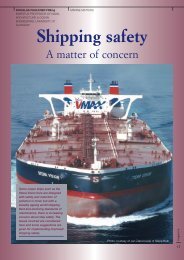


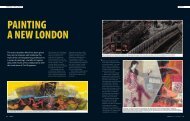
![[322/03] Francke - Ingenia](https://img.yumpu.com/23411337/1/184x260/322-03-francke-ingenia.jpg?quality=85)

